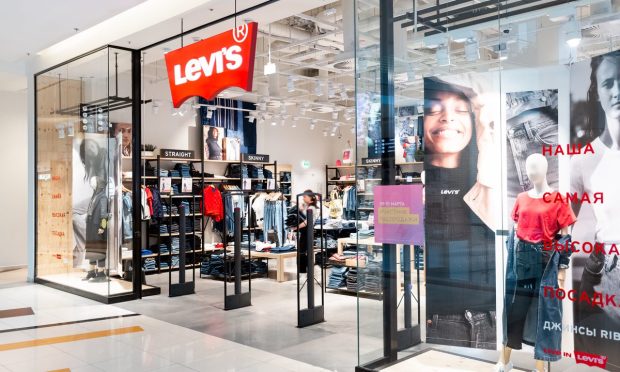
Levi’s is seeing its direct-to-consumer (D2C) business gain share, with transformations to shoppers’ digital journeys yielding strong eCommerce growth.
The apparel company announced Wednesday (April 3) in its first quarter fiscal 2024 financial results that overall net revenue fell 8% year over year, dropping by 11% in the Americas. Yet the D2C business yielded a 10% rise in the U.S., with eCommerce revenue rising 13% across the business. In fact, D2C channels brought in their highest-yet 48% of all net revenues for the brand.
“We’re continuing to see strong momentum in our global direct-to-consumer business, where we have now delivered eight consecutive quarters of robust comp growth,” Levi Strauss & Co.’s CEO Michelle Gass told analysts on a call.
Indeed, there is growing demand for D2C, with younger generations disproportionately engaging with these channels, according to the PYMNTS Intelligence report “The Online Features Driving Consumers to Shop With Brands, Retailers or Marketplaces” created in collaboration with Adobe.
The study, which drew from a survey of more than 3,500 U.S. consumers, found that for digital shopping, Generation Z consumers were the most likely to want to buy directly from a brand and the least likely to prefer shopping via merchants’ online stores. Specifically, 43% of Gen Z said they definitely or probably prefer a brand’s own online store — above the 28% of the population as a whole that said the same.
This D2C growth could bode well for the brand going forward. With a D2C model, brands have full control over the entire customer journey, from marketing to sales to post-purchase support. This allows them to ensure a consistent and high-quality experience for customers, which can strengthen brand loyalty.
Plus, direct interaction with customers through D2C channels provides valuable data insights. Brands can gather information on customer preferences, behaviors and purchasing patterns, enabling them to tailor their products, marketing strategies and customer experiences more effectively, and by cutting out intermediaries such as retailers or wholesalers, brands can capture higher margins on their products.
Gass attributed the brand’s double-digit eCommerce growth to its investments in improving the on-site and in-app experience.
“This is a direct result of the investments we’ve made to enhance the consumer experience including improved search, navigation and filtering capabilities,” Gass said. “We are also creating a more engaging experience by upgrading our product imagery and videos addressing a key consumer need helping people find the perfect fit.”
Indeed, easy, intuitive online experiences can go a long way toward driving sales and loyalty. The same PYMNTS Intelligence and Adobe report revealed that half of consumers surveyed said that they consider how easy the checkout process is when selecting a digital merchant, and 40% said the same of how easy to navigate the merchant’s online store is.
These improvements can be key, considering that a significant share of shoppers now prefer to make purchases online. The PYMNTS Intelligence study “2024 Global Digital Shopping Index: U.S. Edition,” created in collaboration with Visa Acceptance Solutions and drawing from a survey of more than 2,400 consumers in the United States, found that 37% of shoppers choose to do so. Specifically, 26% prefer to make purchases remotely via eCommerce channels, and 11% like to make purchases digitally for in-store pickup.